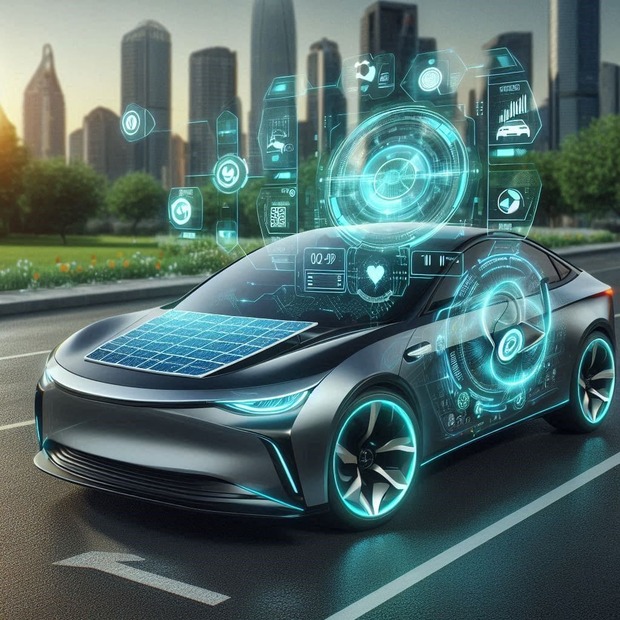Especially in the current era electric vehicles are cars and trucks that run on electricity instead of gasoline or diesel. It uses electric motors and batteries to move. Because it does not burn fuel, it is better for the environment. Let’s learn more about electric vehicles with this fun and easy worksheet on electric vehicles.
What Are Electric Vehicles?
Electric vehicles are types of cars and trucks that get their power from electricity. Instead of using a combustion engine that burns fuel, EVs use electric motors. The energy to power these motors comes from batteries that can be recharged by plugging them into an electrical outlet or charging station. Because they don’t burn fuel, they don’t emit harmful gases, making them a greener choice for transportation.
Types of Electric Vehicles
There are several types of electric vehicles. Here’s a quick overview:
- Battery Electric Vehicles (BEVs): These vehicles run entirely on electricity. They have large batteries that need to be recharged regularly.
- Plug-in Hybrid Electric Vehicles (PHEVs): These vehicles use both electricity and fuel. They can run on electric power for a certain distance before switching to gasoline.
- Hybrid Electric Vehicles (HEVs): These vehicles primarily use gasoline but have a small battery that helps improve fuel efficiency.
How Do Work Worksheet on Electric Vehicles?
Worksheet on electric vehicles work by using electricity stored in their batteries to power an electric motor. Here’s a simple explanation:
Charging the Battery: You plug the vehicle into a charging station or a regular power outlet to charge the battery.
Storing Energy: The battery stores the electrical energy until it’s needed to power the motor.
Powering the Motor: The electric motor uses the stored energy to move the vehicle.
Regenerative Braking: When you brake or slow down, the vehicle can capture some of the energy and store it back in the battery.
Benefits of Worksheet on Electric Vehicles
Electric vehicles offer numerous benefits. Here are some of the main ones:
- Environmentally Friendly: Since EVs don’t produce tailpipe emissions, they help reduce air pollution.
- Cost-Effective: Electricity is cheaper than gasoline, and EVs typically require less maintenance.
- Quiet Operation: EVs are much quieter than traditional cars because they don’t have a noisy combustion engine.
- Use of Renewable Energy: EVs can be powered by renewable energy sources like solar or wind power, further reducing their environmental impact.
Challenges of Electric Vehicles
While electric vehicles have many advantages, they also come with some challenges:
- Limited Charging Infrastructure: There are fewer charging stations compared to gas stations, making it sometimes difficult to find a place to charge.
- Battery Life and Cost: Batteries can be expensive to replace and have a limited lifespan.
- Range Anxiety: Some EVs have a limited driving range on a single charge, which can be a concern for long trips.
How to Charge Electric Vehicles
Charging an electric vehicle is simple and can be done in a few steps:
- Find a Charging Station: Look for a charging station at home, work, or a public location.
- Plug In the Charger: Connect the charging cable to your vehicle’s charging port.
- Wait for It to Charge: Depending on the charger type, it can take a few hours to fully charge the battery.
- Unplug and Drive: Once charged, unplug the charger, and you’re ready to go!
Electric Vehicles and the Future
Electric vehicles are becoming more popular as technology improves and more charging stations are built. Many car manufacturers are investing in EV technology, leading to better batteries and more affordable options. In the near future, electric cars might become the norm rather than the exception. Let’s explore this exciting topic further with our worksheet on electric vehicles.
Fun Facts About Electric Vehicles
- The first electric car was invented in the 1830s.
- Some electric cars can accelerate from 0 to 60 mph in just a few seconds.
- Tesla is a well-known company that specializes in electric vehicles.
- Many cities around the world use electric buses to reduce pollution.
Activity: Draw Your Own Electric Vehicle
Get creative and draw a picture of your own electric vehicle. Think about its design, color, and any special features it might have, like solar panels or an innovative shape.
Activity: Match the Words
Match the words on the left with their meanings on the right:
- Battery – a. A place to charge your EV
- Motor – b. An electric car that uses only electricity
- Charging Station – c. Stores energy for the car
- BEV – d. Makes the car move
Answers:
- c
- d
- a
- b
Activity: Fill in the Blanks
- Electric vehicles use ______ to run.
- EVs are good for the ______ because they do not pollute.
- To charge an EV, you need to find a ______ ______.
- ______ is a company known for making electric cars.
Answers:
- electricity
- environment
- charging station
- Tesla
Conclusion
Worksheet on electric vehicles represent an exciting and environmentally friendly future for transportation. They offer a cleaner alternative to traditional gasoline-powered cars, helping to reduce pollution and save on fuel costs. With continuous advancements in technology and infrastructure, electric vehicles are poised to become a common sight on our roads. Remember, driving electric means driving towards a cleaner, greener planet!
FAQs Navigating Common Queries
What is an electric vehicle?
An electric vehicle is a type of car that runs on electricity instead of gasoline or diesel.
How do you charge an electric vehicle?
You charge an electric vehicle by plugging it into a charging station or a power outlet.
What are the benefits of electric vehicles?
Electric vehicles are better for the environment, cost less to operate, and are quieter than traditional cars.
What are the challenges of electric vehicles?
The main challenges include finding charging stations, battery costs, and the limited range of some EVs.
What types of electric vehicles are there?
There are Battery Electric Vehicles (BEVs), Plug-in Hybrid Electric Vehicles (PHEVs), and Hybrid Electric Vehicles (HEVs).

